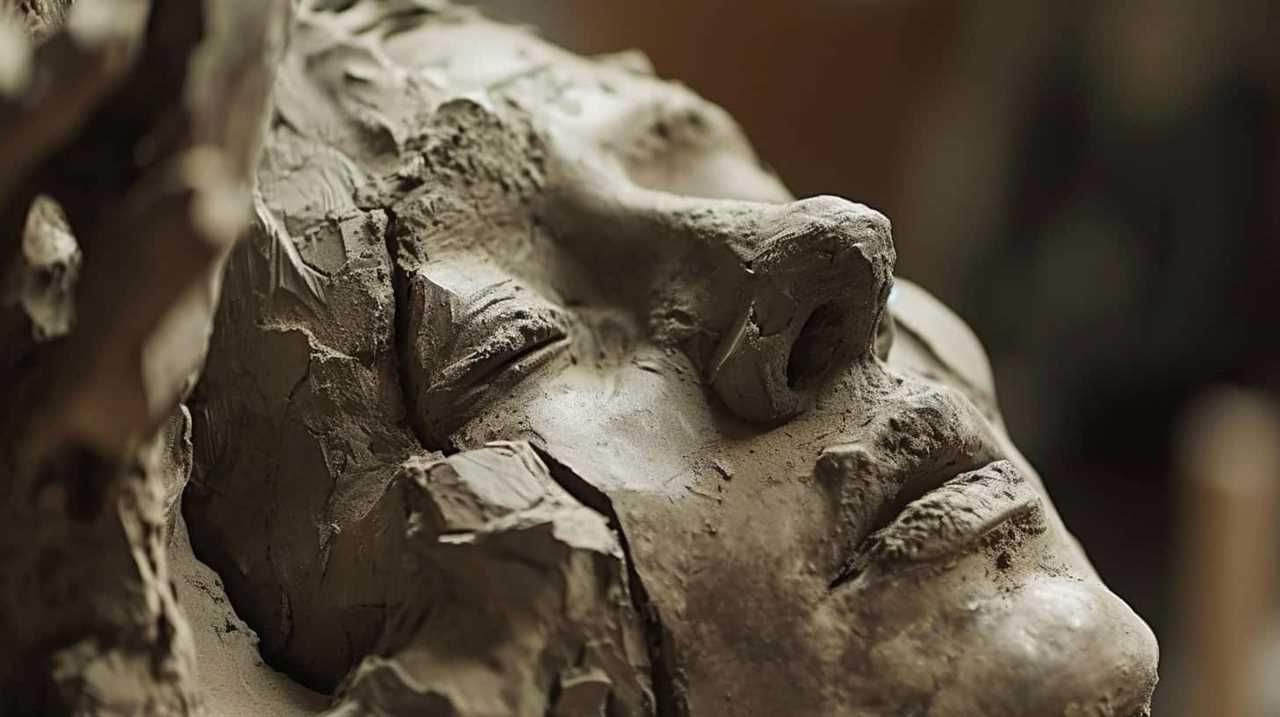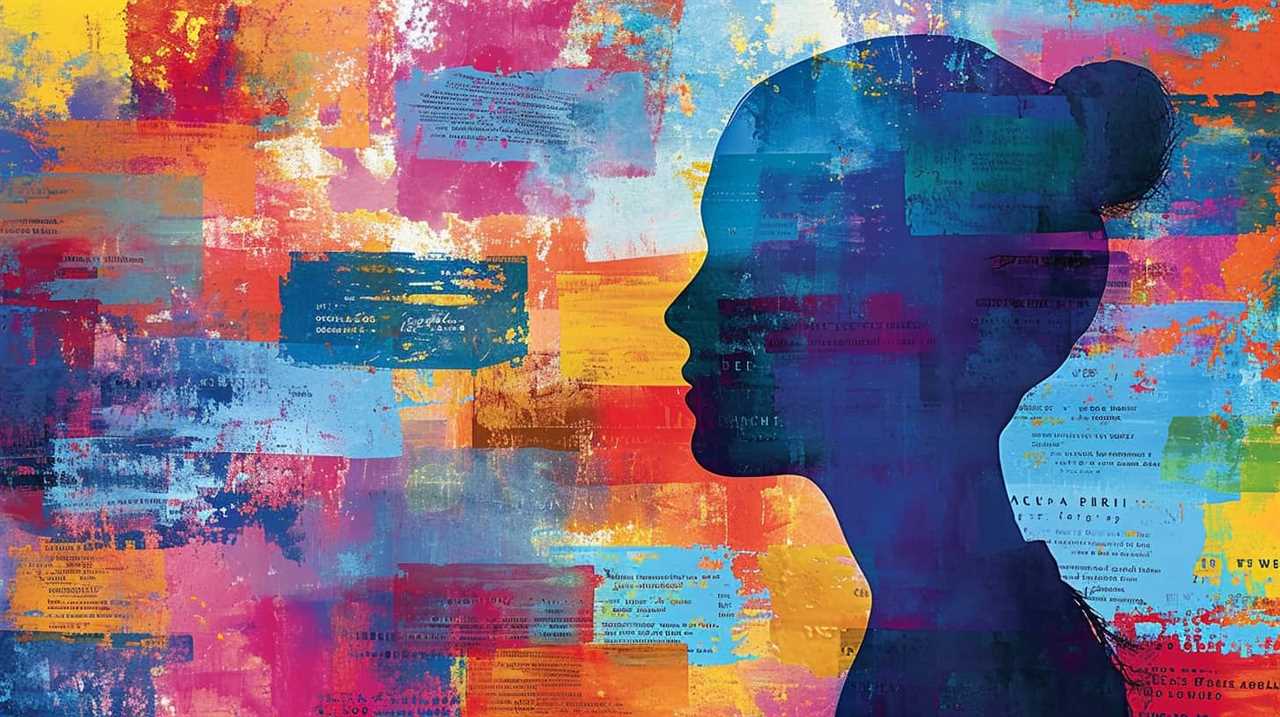Exploring the depths of artistic perception, we embark on a philosophical journey to uncover the mysterious beauty found within art.
In this journey, we explore the profound insights of Plato, Aristotle, Kant, Nietzsche, Dewey, Heidegger, and Danto, all eminent thinkers who have shed light on the intricate tapestry of artistic expression.
Through their profound works, we gain a comprehensive understanding of the multifaceted nature of art, unveiling its essence and purpose.
As we traverse through their philosophical lenses, we witness the interplay of aesthetics, perception, and human experience, unraveling the mysteries that lie beyond the canvas.
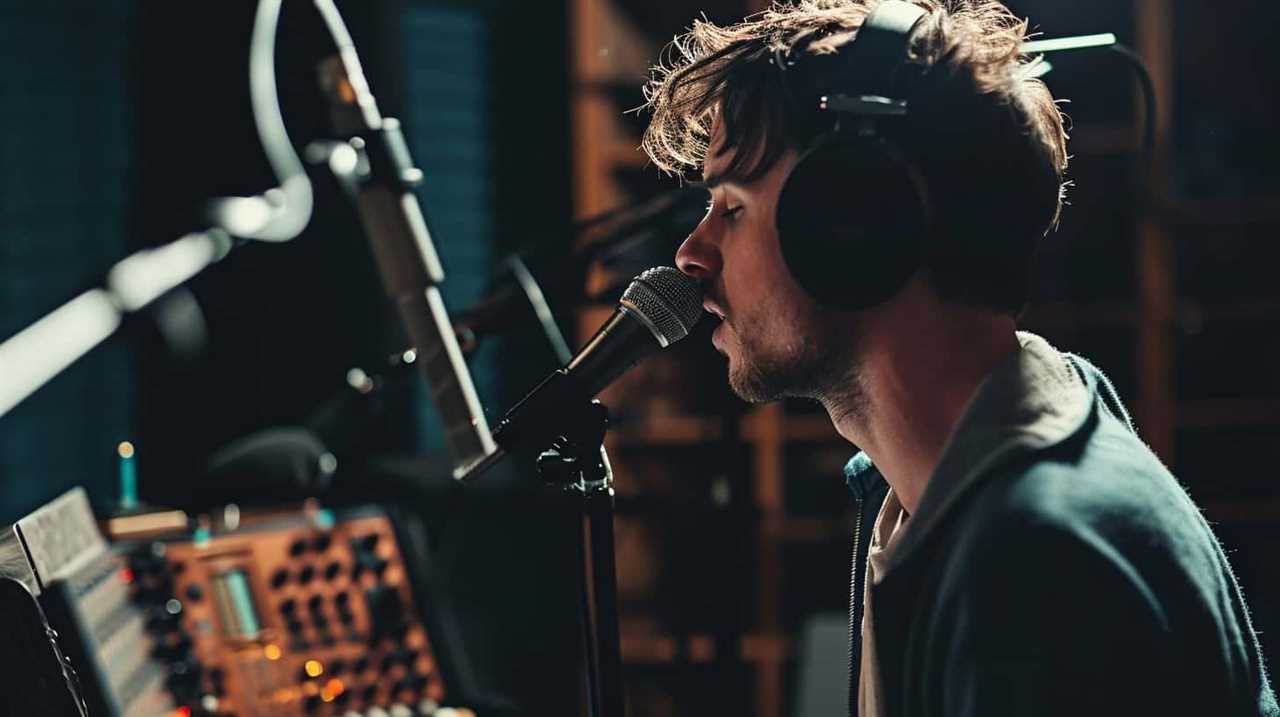
With a desire for mastery, we embark on this intellectual voyage, seeking to decipher art’s beauty and unlock its profound significance in our lives.
Key Takeaways
- Art’s beauty can be understood through different philosophical perspectives, such as Plato’s ideal artistic beauty, Aristotle’s concepts of catharsis and mimesis in art, Kant’s subjective universalism in aesthetic judgment, and the complexity of art’s beauty.
- Nietzsche’s perspective on art includes the Apollonian and Dionysian aspects of art, viewing art as a powerful force for self-expression and societal evolution.
- Dewey’s pragmatic approach highlights how art actively engages the viewer and enhances everyday experiences, connecting art to emotions, desires, and values.
- Heidegger’s existential view suggests that art uncovers truth beyond aesthetic pleasure, serving as a process of unconcealment and deeper understanding. Similarly, Danto’s theory emphasizes art as a carrier of meaning and symbol that provokes thought and reflection, making it a vehicle for philosophical exploration and deeper understanding.
Plato’s Notion of Ideal Artistic Beauty
In our exploration of art’s beauty through philosophical lenses, we frequently encounter Plato’s notion of ideal artistic beauty. Plato’s theory of forms provides a foundation for understanding his perspective on art. According to Plato, the physical world is an imperfect reflection of the ideal world of forms. In this ideal realm, there exists a perfect, unchanging essence of every object or concept. For Plato, art is merely an imitation of these ideal forms, which makes it a mere copy of a copy. This leads to the question of whether art can ever truly capture the essence of beauty.
Aristotle, on the other hand, introduced the concept of catharsis in art. He believed that art has the power to evoke emotions and provide a cathartic release. Through experiencing tragedy in art, audiences are able to purge their own negative emotions and achieve a sense of emotional purification. This concept of catharsis suggests that art has a therapeutic function, allowing individuals to confront and process their own emotions in a safe and controlled environment.
Plato’s theory of forms and Aristotle’s concept of catharsis in art offer contrasting perspectives on the nature and purpose of art. While Plato emphasizes the ideal and the transcendental, Aristotle focuses on the emotional and psychological impact of art. Both viewpoints contribute to our understanding of art’s beauty and provoke us to delve deeper into the complexities of artistic expression.
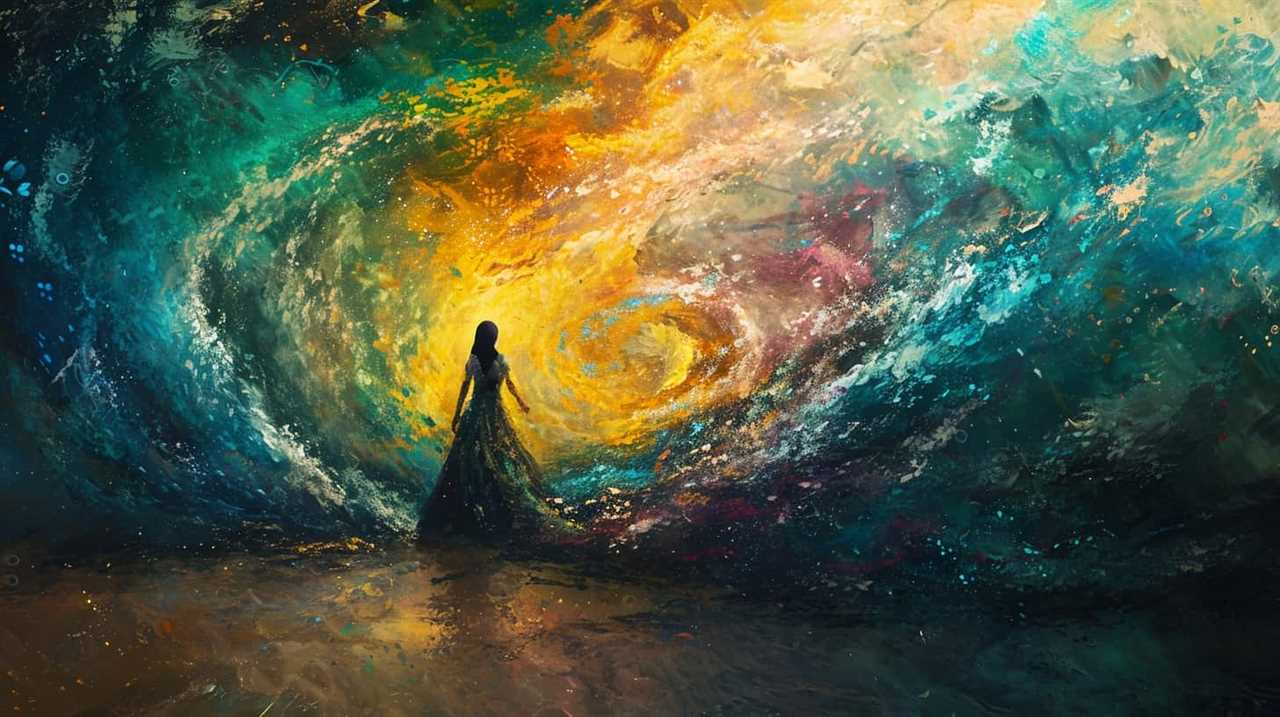
Aristotle’s Concept of Mimesis in Art
Plato’s theory of forms and Aristotle’s concept of catharsis in art have provided valuable insights into art’s beauty, and now we turn our attention to Aristotle’s concept of mimesis in art.
Mimesis, derived from the Greek word meaning ‘imitation,’ forms the basis of Aristotle’s understanding of artistic expression. Through mimesis, artists aim to imitate and represent reality, capturing its essence in their creative works. This concept raises intriguing questions about the nature of art and its relationship to the world around us.
To delve deeper into Aristotle’s concept of mimesis in art, let’s explore the following:
- Understanding imitation and representation in artistic expression: Aristotle believed that art imitates nature, allowing us to experience and understand the world in a unique way. Through their creations, artists mirror reality, offering us a new perspective and enabling us to engage with the human experience.
- Exploring the role of catharsis in Aristotle’s theory of mimesis: Catharsis, an emotional release or purification, plays a significant role in Aristotle’s concept of mimesis. Through art, we’re able to experience catharsis by being moved and emotionally transformed. This transformative power of art allows us to connect with our own emotions and gain a deeper understanding of ourselves and the world around us.
As we unravel Aristotle’s concept of mimesis in art, we gain a profound appreciation for the power of imitation and representation in artistic expression. It challenges us to examine the ways in which art reflects and shapes our understanding of reality, and the transformative impact it can have on our emotions and perceptions.
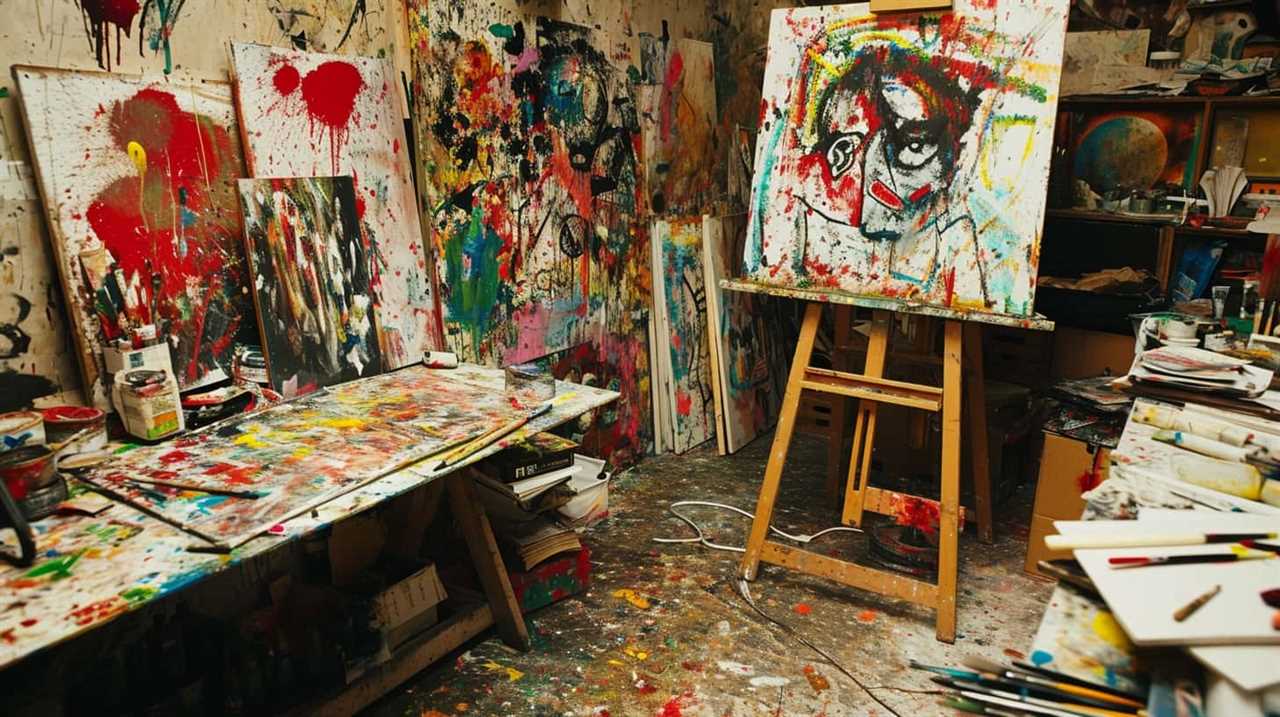
Kant’s Subjective Universalism in Aesthetic Judgment
Our exploration of art’s beauty continues as we delve into Kant’s Subjective Universalism in Aesthetic Judgment. In Kant’s philosophy, aesthetic subjectivity plays a crucial role in determining the beauty of art. According to Kant, aesthetic judgment is subjective because it relies on individual experiences and personal preferences. Each person has their own unique sensibility and taste, which influences their aesthetic judgments.
However, Kant also emphasizes the role of universality in aesthetic judgment. He argues that while aesthetic judgments are subjective, they also possess a universal aspect. Kant believes that there are certain principles of taste that are shared by all rational beings. These principles allow for a certain degree of agreement in aesthetic judgments, even though individual tastes may differ.
To better understand the interplay of subjective and universal elements in aesthetic judgment, let’s examine the following table:
| Subjective Aspect | Universal Aspect |
|---|---|
| Personal preferences and experiences | Shared principles of taste |
| Individual sensibility | Agreement among rational beings |
| Varying aesthetic judgments | Degree of consensus in aesthetic judgments |
This table highlights the dynamic nature of aesthetic judgment in Kant’s philosophy. While individuals may have different subjective experiences and preferences, there is a potential for universality through the recognition of shared principles of taste and the possibility of agreement among rational beings.
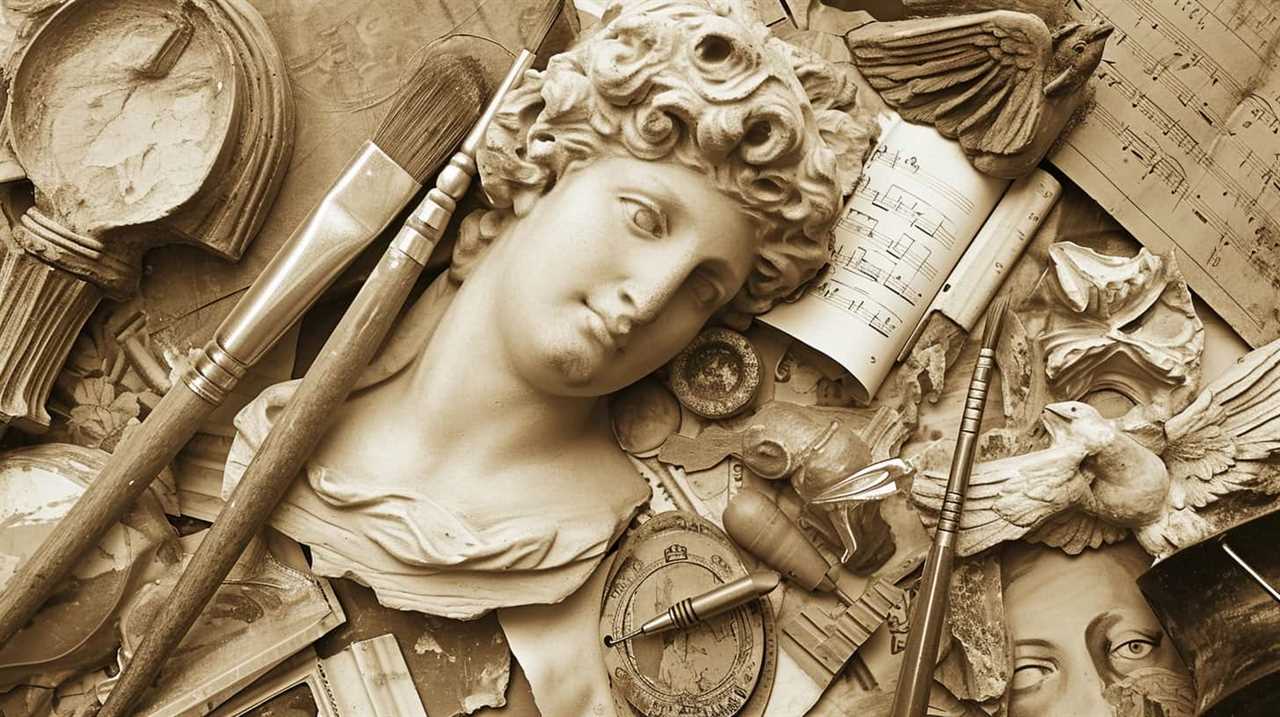
Kant’s Subjective Universalism in Aesthetic Judgment challenges us to consider the complex relationship between individual subjectivity and the pursuit of universal beauty. It invites us to reflect on the ways in which our own aesthetic judgments are shaped by both personal experiences and the shared principles that connect us as rational beings. By engaging with Kant’s ideas, we can deepen our understanding of art’s beauty and the diverse ways in which it is perceived and appreciated.
Nietzsche’s Perspective on Art as Apollonian and Dionysian
From our philosophical perspective, we can unravel Nietzsche’s view on art as both Apollonian and Dionysian. Nietzsche’s critique of art goes beyond mere aesthetic appreciation and delves into the deeper significance and function of art in society. Here are three key points that shed light on Nietzsche’s perspective:
- The Apollonian: Nietzsche identifies the Apollonian aspect of art as representing order, harmony, and rationality. It’s associated with the Greek god Apollo, who symbolizes beauty, clarity, and individuation. The Apollonian element in art seeks to create boundaries, forms, and structures that provide a sense of control and restraint. It appeals to our intellect and allows us to find meaning and purpose in the world.
- The Dionysian: In contrast, the Dionysian aspect of art represents chaos, ecstasy, and irrationality. It’s associated with the Greek god Dionysus, who embodies raw emotions, instincts, and the forces of nature. The Dionysian element in art breaks down the established boundaries, unleashing a primal and ecstatic energy. It connects us with our deepest desires and drives, providing a cathartic release from the constraints of society.
- The Role of Art in Society: For Nietzsche, art serves as a powerful force that challenges the status quo and allows individuals to transcend their everyday existence. It has the potential to awaken and inspire, to disrupt and transform. Art becomes a vital means of self-expression and a medium through which society can evolve and progress.
By understanding Nietzsche’s dualistic perspective on art, we gain insight into the complex interplay between order and chaos, reason and emotion, and the transformative power of artistic experience.
Transitioning into the subsequent section about Dewey’s pragmatic approach to artistic experience, we’ll explore another philosopher’s perspective on the role of art in our lives.
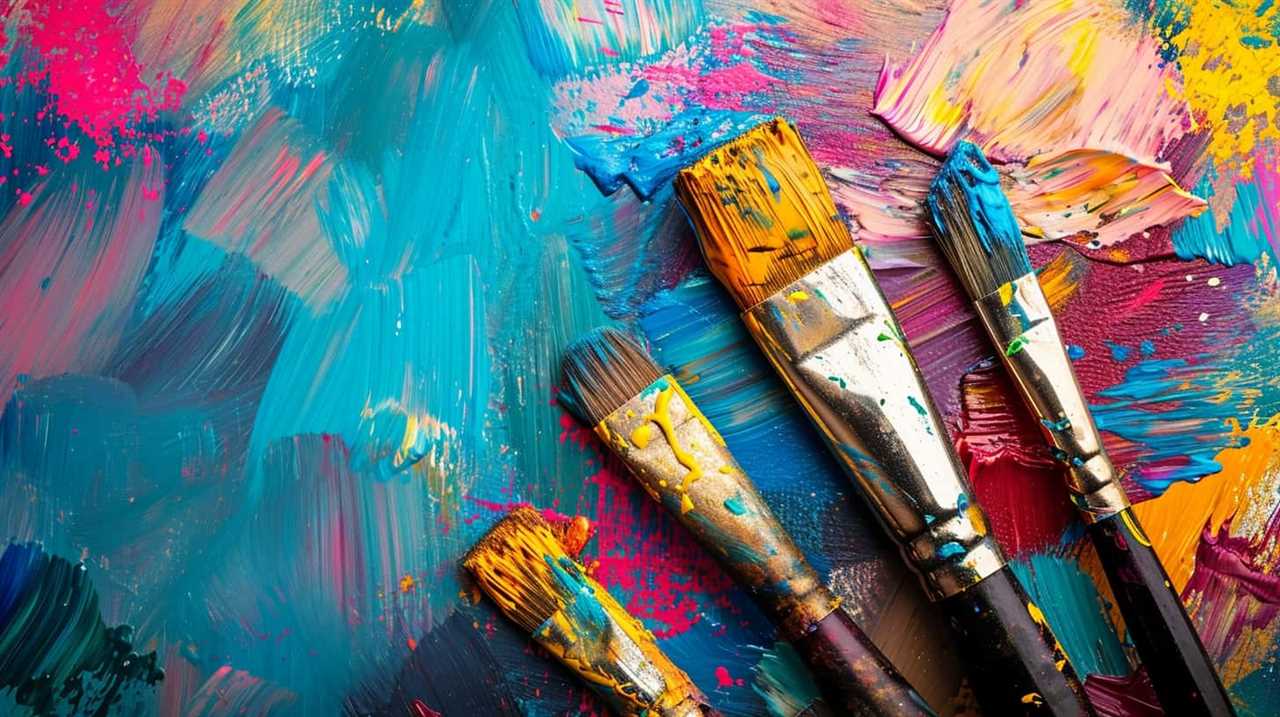
Dewey’s Pragmatic Approach to Artistic Experience
Exploring Dewey’s pragmatic approach to artistic experience reveals the transformative power of art in our lives. Dewey believed that art isn’t merely a passive object of aesthetic contemplation, but rather a dynamic process that actively engages the viewer. He emphasized the pragmatic relevance of art, arguing that its true value lies in its ability to enhance our everyday experiences and shape our interactions with the world.
According to Dewey, aesthetic experience isn’t limited to the traditional realms of painting or sculpture, but can be found in any activity that involves creative expression. Whether it’s cooking, gardening, or even playing a musical instrument, these activities have the potential to elicit aesthetic responses and enrich our lives. Dewey believed that through active engagement with art, we’re able to cultivate a deeper understanding of ourselves and the world around us.
Dewey’s pragmatic approach challenges the notion of art as a detached, purely intellectual pursuit. Instead, he argues that art is a lived experience, intimately connected to our emotions, desires, and values. By actively participating in artistic activities, we’re able to tap into our own creative potential and find meaning in our everyday lives.
Heidegger’s Existential View of Art’s Truth and Unconcealment
In Heidegger’s existential view, art’s truth and unconcealment are revealed through a deep exploration of its essence. Heidegger believed that art has the power to uncover and reveal truth, going beyond mere aesthetic pleasure or entertainment. Here are three key aspects of Heidegger’s view on art’s essence:
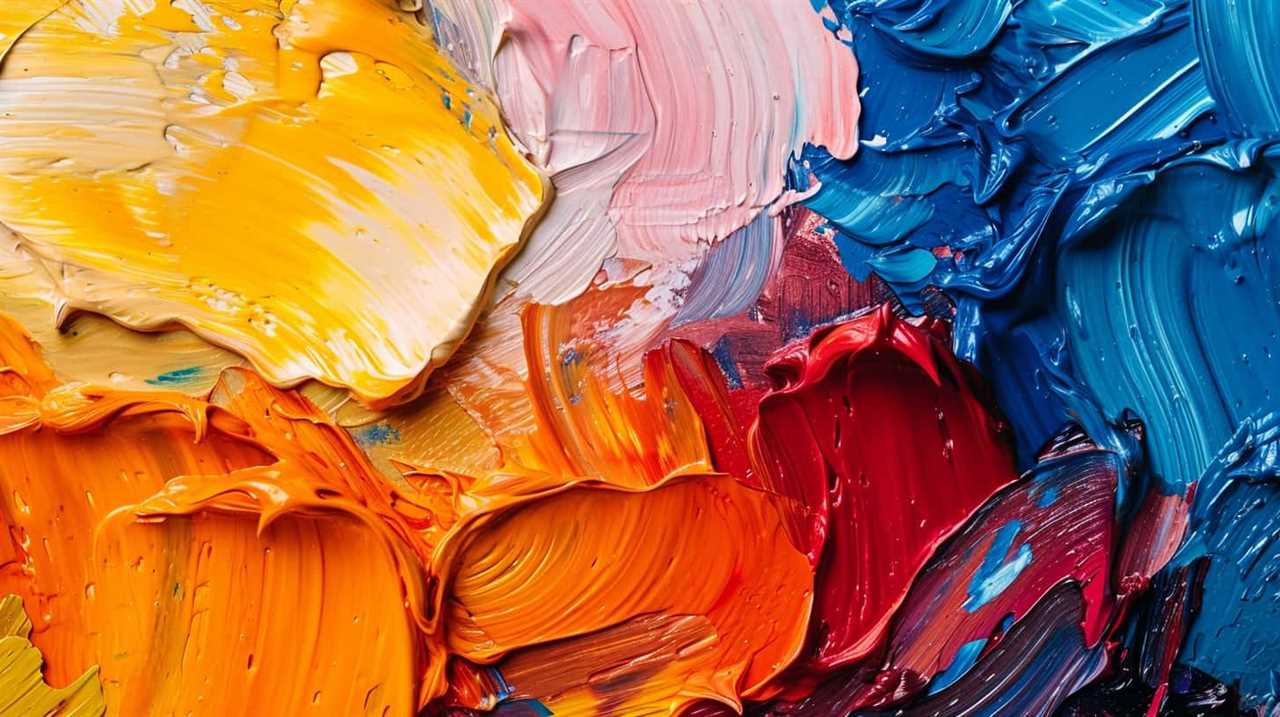
- Art as the revealing of truth: Heidegger argued that art has the ability to open up new ways of understanding and experiencing the world. Through art, the truth of being is brought forth and made visible to us. It isn’t just about creating beautiful objects, but rather about uncovering the deeper meaning and significance of existence itself.
- Critique of aestheticism: Heidegger criticized the prevailing view of art as a mere source of pleasure or entertainment. He believed that reducing art to mere aesthetic enjoyment obscures its true purpose and potential. Instead, he emphasized the importance of engaging with art in a more profound and reflective way, allowing it to reveal truths about ourselves and the world we inhabit.
- Unconcealment as truth: Heidegger saw art as a process of unconcealment, where truth is revealed through the interplay between the artwork and the viewer. Artworks aren’t simply objects to be observed, but rather they open up a space for us to engage with our own existence and to question our understanding of truth.
By exploring these ideas, Heidegger’s existential view of art’s truth and unconcealment challenges us to go beyond surface-level appreciation and to delve deeper into the profound insights that art can offer.
Now, let’s transition into the subsequent section about Danto’s theory of art as a philosophical inquiry.
Danto’s Theory of Art as a Philosophical Inquiry
Danto’s theory presents art as a philosophical inquiry that delves into the nature and meaning of artistic expressions. His interpretation of art as a philosophical inquiry revolutionized contemporary art criticism. According to Danto, art isn’t solely defined by its visual or aesthetic qualities, but rather by the ideas and concepts it embodies. He argues that art is a form of philosophical inquiry because it raises fundamental questions about the nature of reality, existence, and human experience.
In Danto’s view, artworks aren’t mere objects, but rather carriers of meaning and symbols that provoke thought and reflection. They serve as vehicles for philosophical exploration, inviting viewers to engage with complex ideas and contemplate the deeper meanings behind the artwork. By examining the philosophical implications of art, Danto argues that we can gain a deeper understanding of the human condition and the world around us.

Danto’s theory has had a profound impact on contemporary art criticism by shifting the focus from formalist analysis to conceptual interpretation. It encourages viewers to consider the underlying ideas and intentions behind an artwork, rather than solely relying on its visual appeal. In this way, Danto’s theory challenges traditional notions of art and opens up new possibilities for artistic expression and interpretation. It invites us to view art as a philosophical inquiry, a means of exploring and understanding the complexities of the human experience.
Frequently Asked Questions
How Do Plato’s Notions of Ideal Artistic Beauty Relate to the Concept of Mimesis in Art According to Aristotle?
Plato’s ideal beauty connects to Aristotle’s concept of mimesis by highlighting the imitation of nature in art. This relationship sheds light on the interplay between Kant’s subjective universalism and Nietzsche’s Apollonian and Dionysian perspectives on art.
What Is the Connection Between Kant’s Subjective Universalism in Aesthetic Judgment and Nietzsche’s Perspective on Art as Apollonian and Dionysian?
Kant’s subjective universalism and Nietzsche’s perspective on art as Apollonian and Dionysian: a comparative analysis. The influence of Kant’s subjective universalism on Nietzsche’s perspective on art is a fascinating topic, shedding light on the complexities of aesthetic judgment and artistic expression.
How Does Dewey’s Pragmatic Approach to Artistic Experience Differ From Heidegger’s Existential View of Art’s Truth and Unconcealment?
Dewey’s pragmatic approach to artistic experience differs from Heidegger’s existential view of art’s truth and unconcealment. While Dewey emphasizes the practicality and functionality of art, Heidegger focuses on its ability to reveal the essence of being.

In What Ways Does Danto’s Theory of Art as a Philosophical Inquiry Challenge the Ideas Presented by Plato, Aristotle, Kant, Nietzsche, Dewey, and Heidegger?
Danto’s theory of art as a philosophical inquiry challenges traditional theories put forth by Plato, Aristotle, Kant, Nietzsche, Dewey, and Heidegger. Its relevance to contemporary art movements sparks a thought-provoking exploration of art’s meaning and purpose.
Can the Philosophical Lenses Discussed in the Article Be Applied to Contemporary Art Movements, or Are They Primarily Focused on Historical Perspectives?
Applying philosophical lenses to contemporary art allows us to explore its relevance and significance. While historical perspectives offer valuable insights, it is essential to adapt these frameworks to understand the ever-evolving nature of art in today’s society.
How Can Philosophical Insights Enhance the Understanding of Art’s Beauty?
Philosophical insights from art philosophers can deeply enhance the understanding of art’s beauty. By delving into the concepts of aesthetic value, perception, and interpretation, these insights shed light on the subjective nature of beauty in art. They provide a framework for appreciating the complexities and nuances of artistic expression.
Conclusion
In exploring the various philosophical lenses through which art’s beauty can be deciphered, we’ve gained a deeper understanding of the complexities and nuances that lie within artistic expression.
While some may argue that such philosophical analysis strips art of its inherent emotional and personal nature, it’s important to recognize that these lenses simply serve as tools to enhance our appreciation and interpretation of art.

They allow us to delve into the depths of art’s meaning and significance, enriching our own understanding and connection to the artistic world.
Lauren’s talent in writing is matched by her passion for storytelling. Her love for books and deep understanding of culture and entertainment add a distinct flavor to her work. As our media and press contact, Lauren skillfully bridges the gap between afterQuotes and the broader media landscape, bringing our message to a wider audience.
